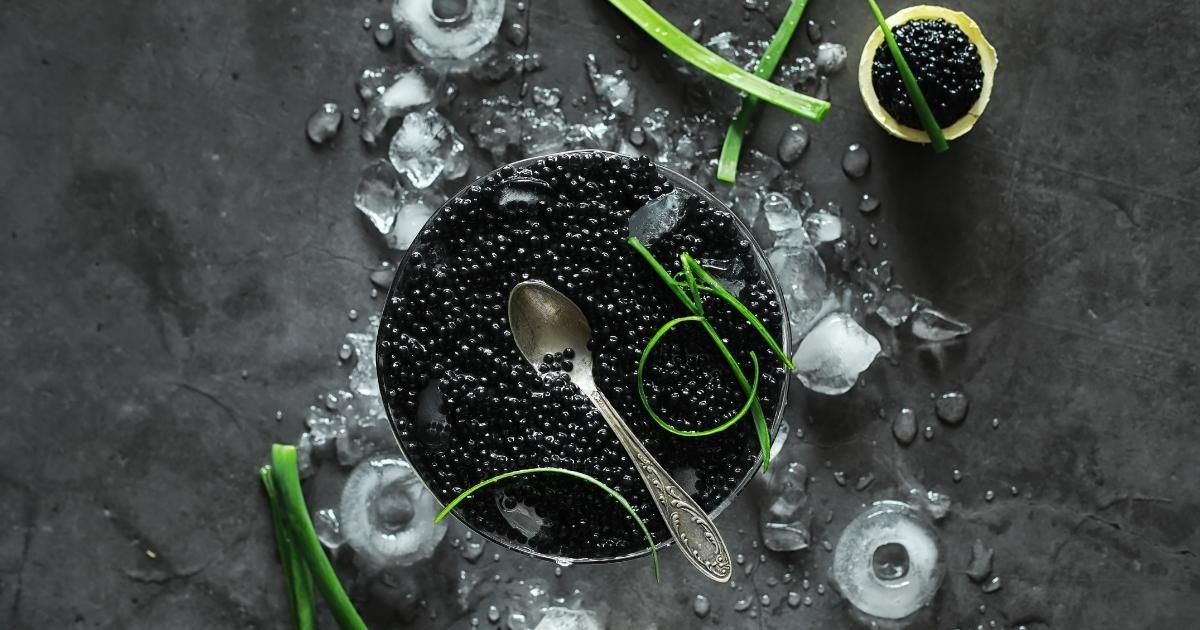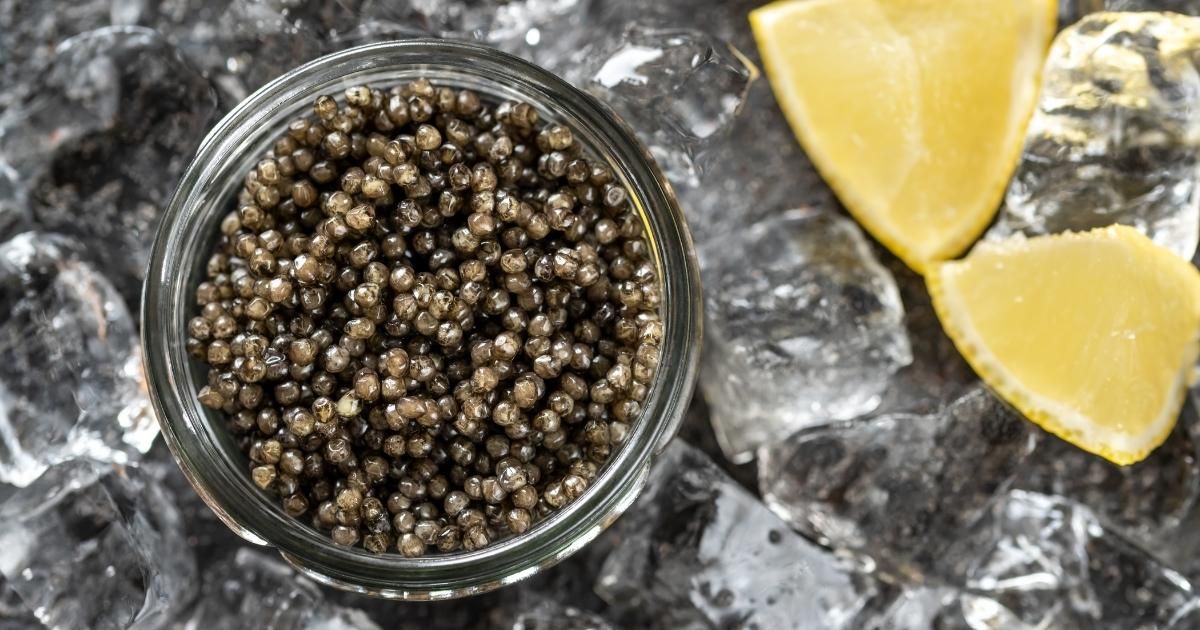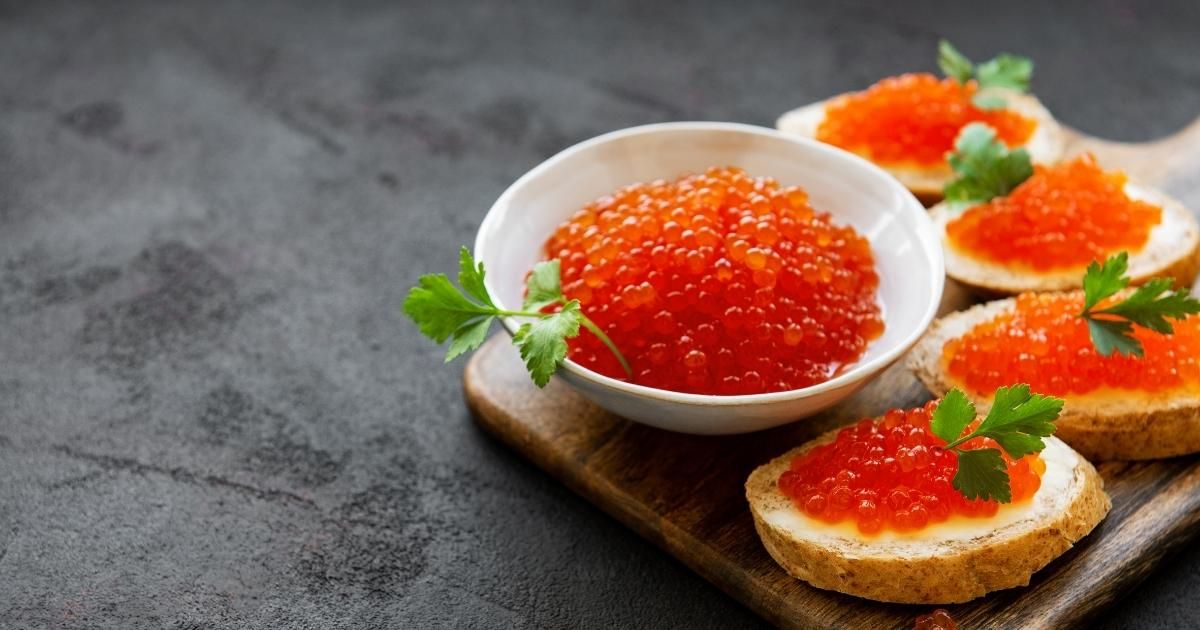Types of Caviar & Uses
Caviar is a delicacy that kings and royalty have enjoyed for ages. It’s now available for all to enjoy! These are the types of caviar.
Caviar is more available than ever. Everyone can enjoy the sea-scented pearls and their attractively fishy flavor. Of course, not all caviar is created equal and knowing more about it pays off.
These are the most common types of caviar. Fish roe of the highest quality and a proper way to swoon your taste buds. Explore the different kinds of caviar and find the right one for you.
What Is Caviar?
Concisely, caviar is the fish roe from various fish in the sturgeon family. Still, this is just the beginning. Caviar is a luxurious sea-scented treat that has been enjoyed for centuries, and it’s still considered one of the most delicate and satisfying foods on the planet.
There are several types of caviar, depending on the fish from where the roe is harvested and how the small, pearly eggs are processed. Some caviar is incredibly rare, and others are more affordable. The distinct types of caviar taste different as well, so you might enjoy one over the others. These are the most common types of caviar, explained.
What Are The Different Types of Caviar?
There are several ways to classify caviar. For starters, you can divide it into quality grades. Grade 1 caviar consists of pristine eggs, intact and evenly shaped, and grade 2 caviar might comprise less than perfect fish roe. And although Grade 1 caviar is the most expensive, no one says no to a spoonful of grade 2 roe.
We can also classify caviar by its color, ranging from black to light gray, sometimes with green or golden hues. Finally, caviar is often classified by the fish that produces it. These are the types of caviar we’ll explore today, the most common caviar by species.
1.Beluga
Beluga caviar is the rarest and most expensive type of caviar. It comes from sturgeons that live in the Caspian Sea. Of course, caviar’s popularity has pushed the beluga sturgeon to the verge of extinction, so this type of caviar is not an easy find.
Beluga caviar is often dark gray, with a buttery texture and a clean fish scent. These pearls are also amongst the firmest. Of course, because Beluga can't be farmed and many countries have banned this type of caviar, you won't be able to taste authentic Beluga caviar anytime soon; don't worry, there are many delicious alternatives, and they're all on this list.
2. Sevruga
Sevruga sturgeons are long-nosed fish native to the Black and Caspian seas. This species is also over-fished, so Sevruga caviar is also rare and expensive.
Also known as sterlet caviar or Siberian sturgeon roe, this variety is made of tiny beads with a delicate flavor and a buttery mouthfeel. Incredibly elegant and pure, this is one of the most prized types of caviar, but the real deal is not available in the retail market.
The alternatives for sevruga have increased in the last few decades, so there’s no reason you should worry too much if you can’t try real sevruga caviar; there are plenty of fish in the sea.
3. Osetra
Osetra roe is nutty and firm, and the grains are reasonably large and juicy. This golden variety is not what we’d call inexpensive, especially when it comes from osetra sturgeons living in the Caspian Sea.
Osetra sturgeons are much smaller than their cousins, but their roe is up there with the best. We also know this type of caviar as the standard Russian caviar, as the country is the largest producer of this variety.
And although osetra sturgeons are also under constant pressure from fisheries, this fish also grows in fish farms, making it a more sustainable form of caviar. If you see golden or copper fish roe on your canapé, chances are it’s farmed osetra caviar.
4. Kaluga
Kaluga is the closest thing to Beluga caviar in the market, and it’s one of everyone’s favorites. This is the roe of a hybrid sturgeon known as the river beluga, and it’s one of the largest freshwater fish on the planet.
Kaluga caviar is also over-fished, and water pollution has endangered this noble species. Still, kaluga caviar is one of the most exciting types of caviar in the legal market. After all, producers go to great lengths to breed this fish sustainably with excellent results.
The roe is often golden with green hues, and the flavor is salty and earthy and not that buttery. The grains are not the largest either, but they’re still sublime.
5. American Caviar
Several American species of fish produce roe not dissimilar to authentic sturgeon caviar, including the Mississippi’s paddlefish, which is sustainably farmed for its roe.
This type of caviar is gaining popularity. The roe is medium to small, often gray or silver. A distinctive earthy note and a refreshing briny flavor give this type of caviar an intense personality. Experts compare paddlefish roe with sevruga, which is already quite a compliment.
Hackleback caviar is another American roe, often compared to paddlefish. This one’s pitch black, though, and the eggs are larger than the most typical types of caviar. This affordable caviar alternative is a great place to start your culinary journey.
6. Other Roe
Not all fish roe is caviar, but people consume a wide variety of fish eggs, which are more affordable than caviar, and equally delicious.
Salmon and trout roe are two excellent examples of fish roe that finds its way to our plates. Salmon roe has a distinctive orange color, and it’s commonly used in sushi—the eggs are ten times larger than sturgeon caviar.
Masago is another orange fish roe, this one from Capelin fish; it’s inexpensive compared to real caviar. These small grains are fishy and juicy, and although they don’t offer the same buttery experience as caviar, they’re crowd-pleasing and delicious. Of course, there are many other edible fish roes on the market today—what is your favorite caviar alternative?
How To Use Caviar?
Caviar is a beautiful food that you can enjoy in many ways. Typically, you can eat caviar by the spoonful, although serving it over a blini (a Russian mini-pancake) with a spread of crème fraîche is more typical at parties and events.
Caviar can also play a role in the kitchen. Of course, the delicate eggs can’t handle high heat, but you can use them to top smoked salmon, garnish scallops, or give life to an omelet.
Cold food, especially seafood-based, is compatible with caviar, which can turn an ordinary meal into an exclusive experience. The best part? Not all caviar is expensive. Besides, sometimes it’s okay to splurge.





























